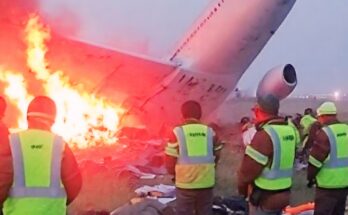
The pairing of the F-35B Lightning II with the amphibious assault ship USS America (LHA-6) represents a major leap forward in naval aviation. The F-35B, a short takeoff and vertical landing (STOVL) variant of the Joint Strike Fighter, is uniquely designed to operate from smaller decks that cannot support traditional catapult-launched aircraft. When stationed aboard USS America, it provides the U.S. Navy and Marine Corps with a level of air power and versatility that rivals that of larger aircraft carriers, reshaping the role of amphibious assault ships in modern naval warfare.
The USS America was designed from the keel up to support aviation, particularly the F-35B. Unlike earlier ships in its class, it lacks a well deck for amphibious vehicles, dedicating that space instead to expanded hangars, aviation fuel storage, and maintenance facilities. This makes it the perfect platform for STOVL operations. With its large flight deck and reinforced landing areas, the ship can accommodate multiple F-35Bs launching and recovering in rapid succession, effectively turning an amphibious assault ship into a “light carrier.”
The F-35B itself is at the heart of this capability. With its lift fan system and swiveling rear nozzle, the aircraft can take off in short distances and land vertically, a critical feature for operating from the relatively small deck of USS America. These structural adaptations allow the fighter to carry out missions that were once the domain of larger, more complex carrier-based aircraft. On board, the F-35B brings stealth, advanced sensors, and precision strike capabilities directly into regions where full-sized carriers may not be present.
One of the most important contributions of the F-35B on USS America is the enhancement of expeditionary strike group operations. Traditionally, amphibious assault ships were focused on transporting Marines and helicopters to shore. With the addition of the F-35B, these ships can now establish air superiority, conduct deep strike missions, and provide close air support to ground forces without relying on nearby carriers. This extends the operational reach of the Marine Corps and creates a more flexible and lethal naval presence.
The integration of the F-35B also brings challenges. The vertical landing capability produces significant heat and downwash, requiring USS America’s deck to be specially reinforced with heat-resistant coatings. Maintenance demands are also higher than with older aircraft, which is why the ship includes expanded repair facilities and advanced logistics systems to keep the fighters mission-ready. The combination of aircraft and ship requires careful coordination between flight crews, deck crews, and maintenance teams to ensure safe and efficient operations.
The presence of F-35Bs on USS America also demonstrates the growing role of allied interoperability. Partner nations such as Japan and the United Kingdom, which also operate the F-35B, can integrate with American ships for joint operations. This strengthens coalition capabilities and ensures that allies can share intelligence and air power across multiple platforms.
In many ways, the deployment of the F-35B aboard USS America redefines what amphibious assault ships can achieve. No longer limited to supporting helicopters and tiltrotors, these ships now project fifth-generation fighter power into contested regions. With stealth, advanced sensors, and precision strike ability operating from a flexible platform, the combination of F-35B and USS America ensures a decisive edge for the U.S. Navy and Marine Corps in the maritime battlespace of the future.


